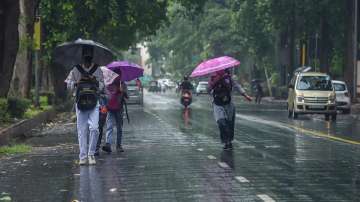Delhi weather: Amid days of scorching heat, Delhi is likely to witness light rains on Friday, bringing much-needed respite from the hot weather. In its bulletin, the India Meteorological Department (IMD) said the minimum temperature in the city was recorded at 27.9 degrees Celsius, while the maximum temperature is likely to hover around 38 degrees Celsius.
Delhi would witness a generally cloudy sky with light rain or drizzle during the day, the IMD said. The national capital recorded 50 per cent relative humidity at 8:30 am.
Delhi AQI in 'moderate' category
Delhi's Air Quality Index (AQI) was recorded in the moderate (128) category at 9 am, according to the System of Air Quality and Weather Forecasting And Research (SAFAR).
An AQI between zero and 50 is considered "good", 51 and 100 "satisfactory", 101 and 200 "moderate", 201 and 300 "poor", 301 and 400 "very poor", and 401 and 500 "severe".
ALSO READ: Delhi's average maximum temperature lowest in 36 years in May month | Here's what all IMD said
Cyclone Biparjoy creates havoc in Gujarat
Meanwhile, Cyclone Biparjoy, which ripped through Kutch and parts of Saurashtra region of Gujarat, has left a trail of destruction as gusty winds and rains wreaked havoc. Heavy rains lashed the entire Kutch district since the cyclone started making landfall near Jakhau Port from 6.30 pm on Thursday and the process continued till 2.30 am, an official said.
The cyclonic storm unleashed destructive wind speeds of up to 140 kmph and incessant rains as trees and electricity poles were uprooted, while seawater entered villages located in low-lying areas.
(With PTI inputs)
